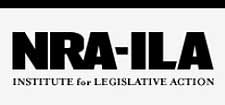

Fairfax, VA – -(Ammoland.com)- This week, the New York Attorney General’s Office, led by Eric T. Schneiderman, released a report entitled “Target on Trafficking: New York Crime Gun Analysis” (the report).
The report – accompanied by an interactive website – uses ATF trace data to attempt to build a case that the “lax” gun laws of other states lead to firearms being illegally “trafficked” into New York, which has some of the nation’s strictest firearms laws.
It then goes on to insist that Congress and even other states must pass additional gun control to secure New York’s “right” to “gun safety.”
In most states, the attorney general’s office would be too busy actually enforcing the state’s own laws to engage in such a lavish propaganda and lobbying effort. New York’s antigun politicians, however, have an established history of using governmental personnel and resources for purely political purposes. And whatever can be said of the report as a political stunt, it clearly fails even casual scrutiny as a serious research effort.
Despite Schneiderman’s claim to a “first-of-its-kind analysis,” we have seen the same argument made already. Repeatedly.
Michael Bloomberg – former mayor of New York City and current sugar daddy to the modern antigun movement – infamously used his public authority during his time in City Hall to conduct legally questionable operations to provoke illegal firearm sales in states to which New York “crime guns” had been traced. Based on the results of these “stings,” his office went on to sue what he characterized as “rogue” firearm dealers in other states, leveraging the home court advantage of Brooklyn’s federal district court. One Georgia firearm dealer targeted in the scheme likened the tactics to sending “somebody down here to rob a bank,” and compared the mayor’s extraterritorial acts to a foreign invasion.
Bloomberg went on to form the antigun group Mayor’s Against Illegal Guns, which published its own “trafficking” report based on ATF trace data back in 2010. That “study” also linked the “lax” gun laws of various states to the trafficking of firearms into states with comparatively strict gun laws and advocated for the enactment of additional gun controls.
That effort, in turn, was similar to prior efforts by the Brady Campaign, which for many years stood virtually alone as the anti-gun movement’s ineffectual standard bearer. One Brady study focused in part on recovery of U.S. “assault weapons” trafficked to Mexico, an argument that became inconvenient for gun control advocates upon the revelation that the Obama administration was itself abetting such trafficking through ATF’s disastrous Operation Fast & Furious.
Throughout all this time, the limits of ATF trace data for broad brush analytics have been well known. These limitations are the reason that Congress has since 2003 generally prohibited the release of ATF trace data to private organization bent on misusing it to file harassing lawsuits or to make bogus generalizations about the universe of “crime guns.”
These legal constraints, unfortunately, have not stopped public officials like Bloomberg or Schneiderman from using their official status to exploit their access to the information and behave as if they were private lobbying firms hired by antigun activists. After leaving office, Bloomberg would go on to fund an antigun propaganda outfit posing as an “independent, nonprofit news organization.” Its name, fittingly, is The Trace.
The mechanisms used by law enforcement officials to trace firearms were established for the specific purpose of solving firearm-related crime. They allow police officers who recover a firearm at a crime scene to determine, through markings on the firearm, its manufacturer, who is required to keep records that would identify the wholesaler to whom the firearm was sold. Similarly, the wholesaler is required to keep records that would identify a retail dealer and the retail dealer to keep records that would identify the initial retail purchaser. This provides police with at least one potential lead to inquire about how the firearm wound up moving from the dealer’s counter to the crime scene.
The dispersed nature of the record keeping system serves an equally important function in protecting the Second Amendment by ensuring that private dealers, and not the government, are the primary repository of information on who buys what firearms in the U.S. Unless a person’s firearm somehow winds up in an investigator’s hands, that purchase should remain unknown to the government, a safeguard against the possible use of firearm ownership to stigmatize or persecute innocent people.
Yet as important as trace information can be in solving specific crimes, it is not intended nor particularly useful for statistical analysis about firearms used to commit crimes. First, it is not a representative sample of the entire universe of crime guns. Not all firearms used in crime are recovered. Some that are recovered are not traced or are untraceable (for example, because the gun’s markings have been removed or because the source of the trace omitted or misidentified necessary information). And police sometimes trace guns that come into their possession for reasons other than their use to commit crime (for example, because they were surrendered by owners who don’t want them or because they were recovered from someone who stole them).
In other words, not all crime guns are traced, and not all traced guns are crime guns. A lengthy “disclaimer” on the New York AG’s interactive website accompanying the report makes this clear.
The Schneiderman report does make some attempt to omit guns that were not associated with criminal activity (such as omitting guns identified as turned in or obtained from a “buyback”). Nevertheless, “gun crime” and “illegal guns” still have meanings in New York that they don’t have in most of America. This is because mere possession of a handgun in New York is presumptively criminal and can support an arrest and seizure of the gun. State residents can obtain handgun licenses, which provide an affirmative defense to this crime, but such licenses are very difficult for non-residents to obtain. And New York police do not have to rule out all affirmative defenses before taking a person’s gun. Thus, the threshold for committing a “gun crime” in New York is very low, and can include simply possessing a handgun without being able to immediately produce a New York license for it.
Any traveler from any place outside New York who happens to bring a lawfully owned handgun into the state (even for a legitimate purpose) can therefore easily get crossways with the law. This is particularly true in New York City (the prime location of firearm recoveries in the report) and at New York airports. Police in airports servicing New York City are notorious for seizing handguns declared in the checked baggage of out-of-state travelers without a New York handgun license, notwithstanding a federal law that is supposed to protect the transport of unloaded firearms. Even if the traveler is not ultimately prosecuted, the firearms are not always returned. Persons otherwise lawfully carrying on a valid license can also run afoul of the law in New York, as the state is one of a very few that does not recognize any out-of-state carry licenses. The report does not distinguish these type of “crime guns” recoveries from the sort involving firearms actually used to commit a violent criminal act.
But even taking the report at face value, its numbers are not very compelling.
The marquis number in the report concerns the 52,915 firearms “recovered” by New York law enforcement agencies from 2010 to 2015. But closer inspection reveals that critical information is missing about those guns.
More than one in ten could not be traced to any particular state. Moreover, ATF was unable to determine a date of retail purchase for 42% of the traced guns. A short interval between a firearm’s first retail purchase and its appearance at a crime scene is considered the leading indicator of a firearm obtained with intentional trafficking in mind. Yet this information was missing in nearly half of the report’s sample. In fact, only 2,437 of the firearms (less than 5%) were recovered within one year of purchase, and less than 10% were recovered within three years.
The report also makes much of the fact that of the firearms whose state of origin could be traced, 74% originated out of state. Again, however, this does not necessarily mean people are intentionally trafficking firearms for illegal purposes into New York from other states. It may simply reflect the fact that tourists and visitors to New York unacquainted with its strict gun laws are particularly vulnerable to having firearms seized for technical violations. It could also reflect the fact that many people come to New York from out of state, as compared to other states where the population is more stable.
As in the reports that proceeded this one, Schneiderman’s office points his finger at certain states as disproportionately supplying “crime guns” (particularly handguns) to New York through a so-called “Iron Pipeline” extending south along the I-95 corridor to Florida and west across Pennsylvania to Ohio.
But at least three of the seven states identified have relatively strict rules for purchasing handguns. North Carolina requires a special permit to purchase handguns that (in addition to the required background check) leaves an unusual amount of discretion to the issuing official to determine who possesses the requisite “good moral character.” This permit requirement also applies to the private sale of handguns, and a separate permit is required for each purchase. Pennsylvania bans the private sale of handguns, and all lawful handgun sales are registered with the state police. Florida, meanwhile, generally requires a three-day waiting period for the purchase of a handgun. Given these restrictions, none of these states would seem an obvious place to lawfully buy handguns en masse for the purpose of illegally trafficking them to another state.
It’s hardly surprising that the number one takeaway from the report is that the federal government should pass a universal background check law. This is, after all, the number one goal of the modern gun control movement, as its enforceability requires universal licensing and/or registration.
But the sort of trafficking alleged by the report already involves the violation of numerous existing federal felony prohibitions, none of which the Obama administration has shown any special interest in enforcing. Examples include falsifying firearm purchase paperwork, transferring firearms to residents of a different state, dealing in firearms without a license, transferring firearms to prohibited persons, removing federally required markings from firearms, transporting or receiving a firearm with reasonable cause to believe it will be used in a felony, or transferring a firearm knowing it will be used in a violent or drug trafficking crime. With so many laws being broken, why would another law make all the difference?
This is all just to say that the New York AG’s Office is promoting a tired argument with bad information to arrive at an irrational conclusion. But what else is new when it comes to the fight for gun control?
About:
Established in 1975, the Institute for Legislative Action (ILA) is the “lobbying” arm of the National Rifle Association of America. ILA is responsible for preserving the right of all law-abiding individuals in the legislative, political, and legal arenas, to purchase, possess and use firearms for legitimate purposes as guaranteed by the Second Amendment to the U.S. Constitution. Visit: www.nra.org
